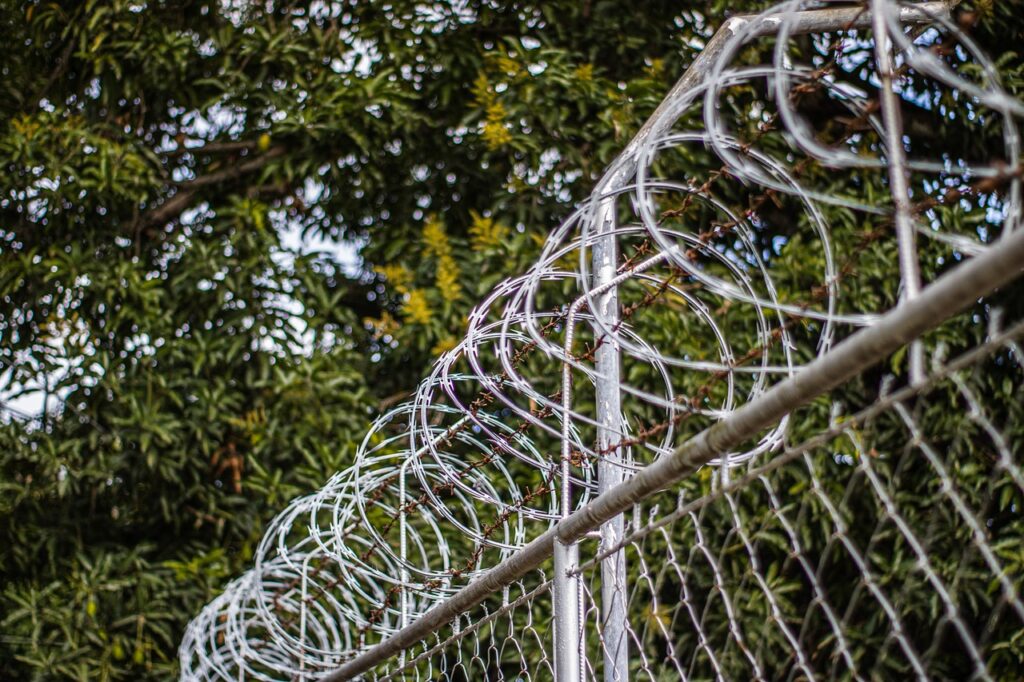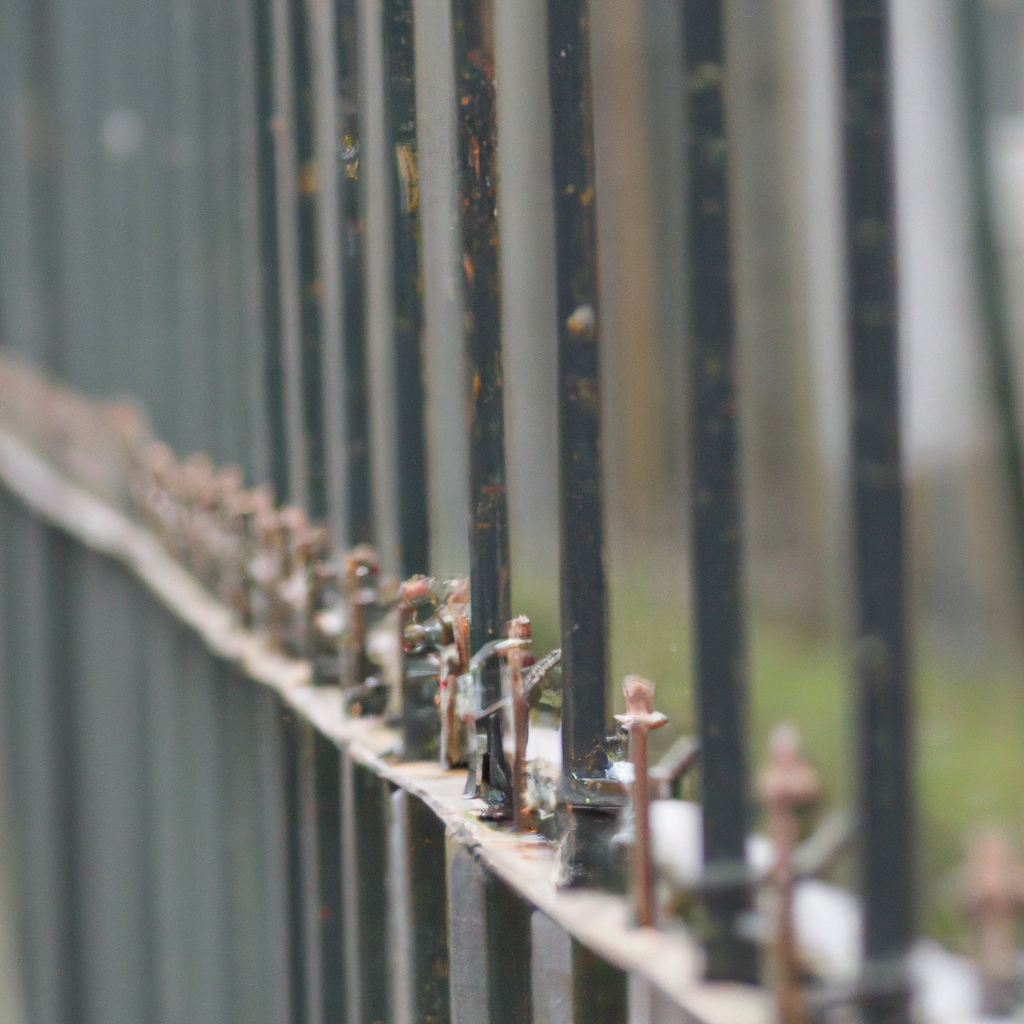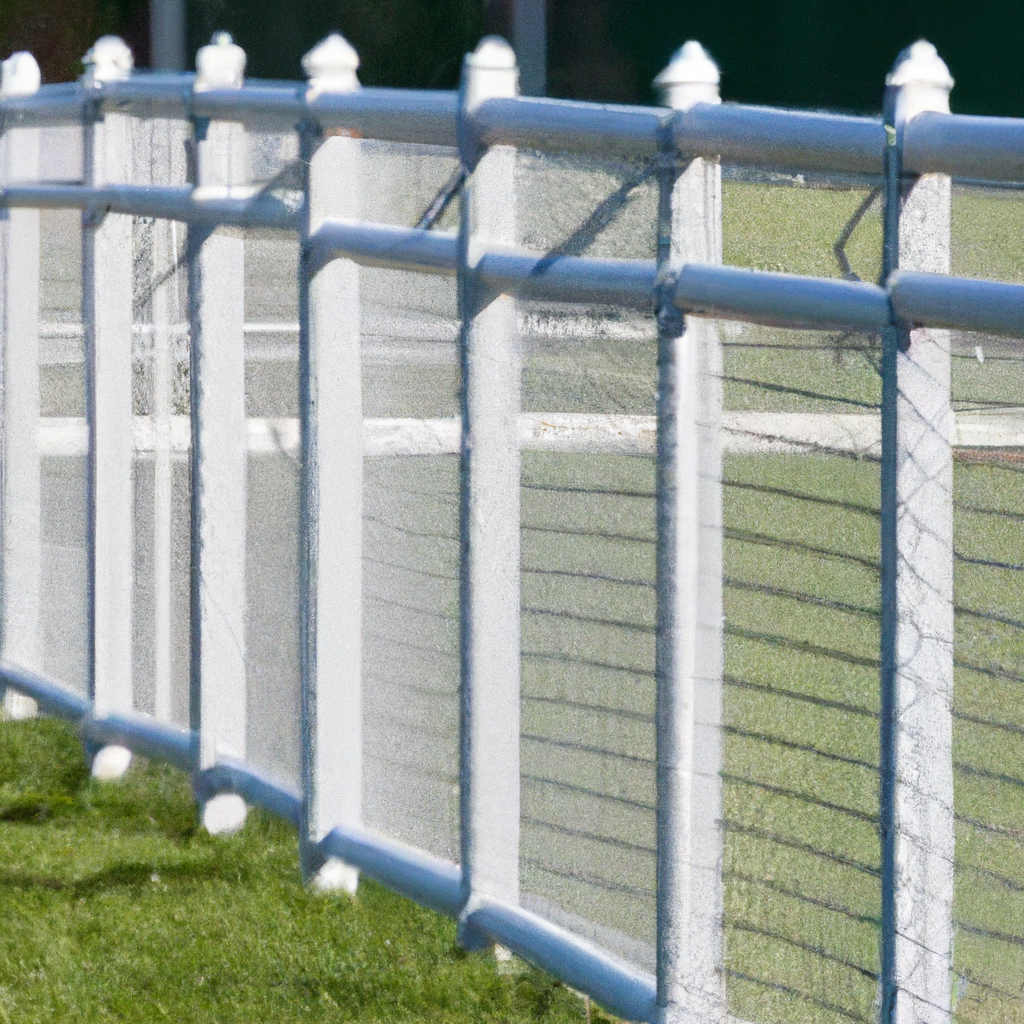Are you in need of reliable information on how to properly maintain and repair your fence gate? Look no further! At “fencedude.com,” we are dedicated to providing comprehensive and engaging content about all things fences. From different types, sizes, shapes, and materials, we cover it all and strive to resonate with the interests of our audience. Our goal is to educate readers on the characteristics and advantages of various fence types such as wooden fences, chain-link fences, vinyl fences, metal fences, and more. We will explore their benefits, maintenance requirements, durability, and aesthetic appeal, helping you make informed decisions when selecting and installing fences. Stay tuned for our valuable knowledge and practical advice to ensure your fence gate stays in excellent condition.
Proper Maintenance of Fence Gate
Inspecting the Fence Gate Regularly
To ensure the longevity and functionality of your fence gate, it is crucial to inspect it regularly. By identifying any issues early on, you can prevent further damage and costly repairs. When inspecting your fence gate, make sure to check for loose or damaged components, examine hinges and latches, inspect the gate frame, and assess the overall stability.
Cleaning the Fence Gate
Cleaning your fence gate is another essential step in its maintenance. Over time, dirt, debris, and grime can build up, affecting both the appearance and functionality of your gate. To clean your fence gate, start by removing dirt and debris, using mild cleaning solutions suitable for the gate material. For wooden gates, be cautious not to use abrasive or harsh cleaning products that can damage the wood. For metal gates, consider using a wire brush to remove rust or any stubborn stains.
Repairing Damaged Components
As with any structure, fence gates can experience wear and tear over time. It is crucial to address any damaged components promptly to prevent further deterioration. Common issues include broken pickets or slats, sagging or misaligned gates, faulty hinges or latches, and weak points in the structure. By replacing broken pickets or slats, fixing sagging or misaligned gates, repairing hinges and latches, and reinforcing weak points, you can maintain the structural integrity of your fence gate.
Applying Protective Coatings
To prolong the lifespan of your fence gate and protect it from the elements, applying protective coatings is essential. Choosing the right coating for your gate is crucial, as different materials require specific types of protection. Before applying any coating, make sure to prepare the gate surface properly, ensuring it is clean and free from any existing coating or debris. Depending on the material of your gate, you can apply stain or paint for wooden gates or specialized coatings for metal gates. Sealing and weatherproofing the gate after applying the coating will further enhance its durability and resistance to environmental factors.
Tools and Materials Needed
To properly maintain and repair your fence gate, you will need specific tools and materials. Here is a list of items you may require for each step of the process:
Inspection Tools
- Flashlight
- Screwdriver
- Level
- Tape measure
Cleaning Materials
- Broom or brush
- Mild cleaning solution or detergent
- Sponge or soft cloth
- Garden hose or pressure washer (with caution)
Repair Tools
- Hammer
- Pliers
- Screwdriver set
- Wire brush
- Saw (for cutting replacement pickets or slats)
- Drill and screws (for reinforcement purposes)
Protective Coatings
- Stain or paint (for wooden gates)
- Rust-proof spray or paint (for metal gates)
- Sealant or weatherproofing agent (compatible with the gate material)

Inspecting the Fence Gate Regularly
Regular inspections of your fence gate are crucial to identify any potential issues and address them promptly. By checking for loose or damaged components, examining hinges and latches, inspecting the gate frame, and assessing the overall stability, you can ensure the gate’s proper functioning and prevent further damage.
Checking for Loose or Damaged Components
Start by visually inspecting the gate for any loose or damaged components. Check for any loose screws, broken pickets or slats, or signs of structural damage. Tighten loose screws or bolts and replace any broken or damaged components.
Examining Hinges and Latches
Hinges and latches are critical for the smooth operation of your fence gate. Inspect the hinges for rust or signs of wear and tear. Lubricate them if necessary or replace them if they are damaged beyond repair. Similarly, examine the latches to ensure they are functioning correctly. Repair or replace any faulty latches to ensure proper gate closure and security.
Inspecting the Gate Frame
Inspect the gate frame for any signs of damage, such as cracks or rot in wooden gates. Pay attention to any areas where the gate meets the ground, as these are prone to moisture damage. If you notice any damage, consider reinforcing the frame or replacing any compromised sections.
Assessing the Overall Stability
Lastly, assess the overall stability of your fence gate. Ensure that it opens and closes smoothly without any resistance or misalignment. If you notice any instability or misalignment, it may be necessary to reinforce the gate with additional supports or adjust the hinges and latch alignment.
Cleaning the Fence Gate
Cleaning your fence gate regularly is crucial for both its aesthetics and functionality. Here are some steps to follow when cleaning your fence gate:
Removing Dirt and Debris
Start by removing any loose dirt, leaves, or debris from your fence gate. Use a broom or brush to sweep away the surface debris. This step helps prevent scratches and ensures a cleaner surface for further cleaning.
Using Mild Cleaning Solutions
Prepare a mild cleaning solution suitable for your gate material. For wooden gates, a mixture of warm water and mild dish soap or a specialized wood cleaner is usually sufficient. For metal gates, you can use a mixture of water and mild detergent or opt for specialized metal cleaners. Avoid using abrasive or harsh cleaning products, as they can damage the gate surface.
Cleaning Wooden Gates
To clean wooden gates, dip a sponge or soft cloth in the cleaning solution and gently scrub the surface. Pay special attention to any stains or stubborn dirt. Be cautious not to scrub too hard, as this can damage the wood. Rinse the gate thoroughly with clean water and allow it to dry completely before applying any protective coatings.
Cleaning Metal Gates
For metal gates, use a wire brush to remove any rust or stubborn stains. Scrub gently in a circular motion, focusing on the affected areas. After removing the rust or stains, rinse the gate with clean water to remove any residue. Dry the gate thoroughly before proceeding with any protective coatings.

Repairing Damaged Components
Over time, fence gates may experience various forms of damage. Properly addressing these issues is essential to maintain the gate’s structural integrity and functionality. Here are some common repairs you may need to undertake:
Replacing Broken Pickets or Slats
If you have a wooden gate and notice broken or rotted pickets or slats, it is crucial to replace them promptly. Start by removing the damaged picket or slat by loosening the screws or nails holding it in place. Measure and cut a replacement picket or slat to the appropriate size and attach it securely using new screws or nails.
Repairing Sagging or Misaligned Gates
Sagging or misaligned gates can be both aesthetically displeasing and problematic in terms of functionality. To fix a sagging gate, start by identifying the cause of the problem. It may be due to weakened posts or hinges. Reinforcing the posts with additional supports or replacing faulty hinges can help rectify the issue. Adjust the gate’s position until it is level and stable.
Fixing Hinges and Latches
Hinges and latches are vital components of any fence gate. If you notice rusted or damaged hinges, remove them from the gate and replace them with new ones. Lubricate the new hinges to ensure smooth operation. Similarly, if the latches are faulty or damaged, repair or replace them to ensure proper gate closure and security.
Reinforcing Weak Points
Inspect your fence gate for any weak points or areas prone to damage. It may be necessary to reinforce these sections to prevent further deterioration. Depending on the gate’s material, you can use additional screws or bracing to strengthen weak points. Consider consulting a professional if you are unsure about the appropriate reinforcement method for your specific gate.
Applying Protective Coatings
Protective coatings play a vital role in maintaining the durability and appearance of your fence gate. Here are some steps to follow when applying protective coatings:
Choosing the Right Coating for Your Gate
The type of coating you choose depends on the material of your fence gate. For wooden gates, you can opt for stain or paint. Stains enhance the natural beauty of the wood while providing protection against UV rays and moisture. Paints offer a broader range of color options and provide a more opaque protective layer. For metal gates, consider using rust-proof sprays or specialized metal paints to prevent rust and corrosion.
Preparing the Gate Surface
Before applying any coating, prepare the gate surface properly. Remove any loose or flaking paint, rust, or previous coatings. Sand the surface gently to ensure a smooth finish. Clean the gate to remove any dust or debris and allow it to dry completely before proceeding.
Applying Stain or Paint
Start by applying the stain or paint according to the manufacturer’s instructions. Use a brush or roller to apply an even coat, working in the direction of the wood grain or gate surface. Pay attention to any intricate details or hard-to-reach areas. Allow the first coat to dry before applying additional coats, if desired, to achieve the desired level of protection and appearance.
Sealing and Weatherproofing the Gate
After applying the stain or paint, consider sealing the gate to provide additional protection against moisture and the elements. Use a compatible sealant or weatherproofing agent and apply it according to the manufacturer’s instructions. Allow adequate drying time before exposing the gate to water or other elements.

Common Fence Gate Issues
While regular maintenance can prevent many issues, some common problems may still arise with fence gates. Here are a few common issues to be aware of:
Sagging Gate
A sagging gate is a common problem that can occur due to various reasons, such as weakened posts, faulty hinges, or imbalanced weight distribution. It is important to address the underlying cause promptly to prevent further damage and instability.
Sticking Gate
A gate that sticks or is difficult to open or close can be frustrating. This issue can be caused by misalignment, debris buildup, or expansion/contraction due to temperature and moisture changes. Carefully inspect the gate to identify the cause and make the necessary adjustments or repairs.
Rusty Hinges
Rust can develop on metal gate hinges over time, affecting their functionality and appearance. Regular cleaning, lubrication, or replacement of rusty hinges can help prolong their lifespan and ensure smooth operation.
Broken Latches
Faulty or broken latches can compromise the security of your fence gate. It is crucial to repair or replace them promptly to ensure proper gate closure and prevent unauthorized access.
Troubleshooting Common Problems
While some issues may require professional assistance, certain common problems with fence gates can be addressed through simple troubleshooting methods. Here are some tips for troubleshooting common fence gate problems:
Adjusting Gate Hinges
If your gate is misaligned or sagging, adjusting the gate hinges may help rectify the problem. Loosen the hinge screws slightly, reposition the gate to the desired alignment, and tighten the screws again.
Fixing Gate Misalignment
If your gate is misaligned and doesn’t close properly, you can try adjusting the latch or the strike plate. Tighten or loosen the screws holding the latch or strike plate, and test the gate’s closing function. Repeat the adjustment until the gate closes securely.
Removing Rust from Hinges
If you notice rust on your gate hinges, you can remove it using a wire brush or steel wool. Scrub gently to remove the rust, and apply a rust converter or metal primer to prevent further rusting. Lubricate the hinges after removing the rust to ensure smooth movement.
Repairing or Replacing Latches
If your gate latch is damaged or not functioning correctly, consider repairing or replacing it. Remove the faulty latch, clean the area, and install the new latch according to the manufacturer’s instructions. Test the latch’s operation to ensure proper gate closure.

Preventive Measures for Fence Gate Maintenance
To minimize the likelihood of encountering significant issues with your fence gate, proactive maintenance and preventive measures are essential. Here are some preventive measures you can take:
Performing Regular Inspections
Schedule regular inspections of your fence gate to identify any potential issues early on. Inspect for loose components, signs of wear and tear, and general stability. By addressing minor issues promptly, you can prevent them from escalating into more significant problems.
Cleaning and Maintaining Surrounding Areas
Keep the area surrounding your fence gate clean and free from debris. Remove any vegetation or shrubs that may obstruct the gate’s movement. Regularly clean the gate surroundings to prevent dirt buildup, rot, or damage to the gate structure.
Addressing Minor Issues Promptly
Do not neglect minor issues with your fence gate, as they can escalate and lead to more significant and costly repairs. Replace broken pickets or slats, tighten loose screws, and address rust or paint chips promptly to maintain the gate’s optimal condition.
Applying Protective Coatings Regularly
Regularly applying protective coatings, such as stain, paint, or rust-proof sprays, can significantly prolong the lifespan of your fence gate. Follow the manufacturer’s recommendations for reapplication intervals, considering the gate’s exposure to sunlight, moisture, and other environmental factors.
Professional Help and DIY Tips
While many fence gate maintenance tasks can be done as do-it-yourself (DIY) projects, some situations may require professional assistance. Here are some considerations and tips for both scenarios:
Knowing When to Hire a Professional
If you encounter extensive damage, structural issues, or complex repairs, it may be best to hire a professional fence contractor or handyman. Professionals have the necessary expertise, tools, and experience to handle more complicated repairs or replacements safely and efficiently.
DIY Fence Gate Maintenance Tips
For simpler maintenance tasks, such as tightening screws, replacing pickets, or cleaning the gate, you can opt for DIY methods. Make sure to research and follow proper techniques and safety precautions for each task. Wear appropriate safety gear, such as gloves and safety goggles, when working on your fence gate.
Safety Precautions for DIY Repairs
When embarking on DIY fence gate repairs, it is essential to prioritize safety. Always use appropriate safety gear, such as gloves, safety goggles, and protective clothing, to protect yourself from potential injuries. Read and follow all product labels and manufacturer instructions when using tools, chemicals, or coatings.
Choosing Quality Replacement Parts
When replacing components of your fence gate, such as pickets, slats, hinges, or latches, opt for quality parts that are compatible with your gate material. Consult with a reliable supplier or fence contractor to ensure you select the appropriate replacement parts for your specific gate design and dimensions.
FAQs about Fence Gate Maintenance and Repair
Here are some common questions regarding fence gate maintenance and repair, along with their corresponding answers:
-
How often should I inspect my fence gate?
- It is recommended to inspect your fence gate at least twice a year, particularly during seasonal changes or after severe weather events. However, regular visual inspections throughout the year can help identify any issues early on.
-
Can I use a pressure washer to clean my gate?
- While pressure washers can be effective in removing dirt and grime, they should be used with caution, especially for wooden gates. The high pressure can damage the wood or force water into areas that may cause rot. Consult the manufacturer’s recommendations and consider using lower pressure or specialized attachments when using a pressure washer on your gate.
-
How do I fix a sagging gate?
- Fixing a sagging gate may involve reinforcing the support posts, replacing hinges, or adjusting the gate position. Consult a professional or follow proper DIY techniques to identify the underlying cause and make the necessary adjustments.
-
What should I do if my gate becomes misaligned?
- If your gate becomes misaligned, inspect the hinges, latch, and strike plate for any signs of damage or misalignment. Adjusting these components or replacing faulty ones can help realign the gate and ensure proper closure.
-
How can I prevent rust on my gate hinges?
- Regularly inspect your gate hinges for signs of rust and lubricate them with oil or silicone-based lubricants. Applying a rust-proof paint or spray can also help prevent rust formation.
-
How do I replace a broken latch?
- To replace a broken latch, remove the faulty one by unscrewing or removing the attaching hardware. Clean the area and install the new latch according to the manufacturer’s instructions. Test its operation to ensure proper gate closure.
-
Is it necessary to hire a professional for gate repairs?
- While simple maintenance tasks can be done as DIY projects, more complex repairs or extensive damage may require professional assistance. If you are unsure about the scope of repairs, consult a professional to ensure the job is done correctly and safely.
-
What tools do I need for DIY gate maintenance?
- Some common tools for DIY gate maintenance include screwdrivers, pliers, wire brushes, hammers, drills, and saws. The specific tools required may vary depending on the maintenance task at hand.
-
Do I need to wear safety gear when repairing my gate?
- Yes, it is essential to prioritize safety when repairing your gate. Wear appropriate safety gear, including gloves, safety goggles, and protective clothing, to protect yourself from potential injuries.
-
Where can I find high-quality replacement parts for my gate?
- You can find high-quality replacement parts for your gate at reputable fence suppliers, hardware stores, or online marketplaces. Consult with a reliable supplier or fence contractor to ensure you select the appropriate parts for your specific gate type and dimensions.
